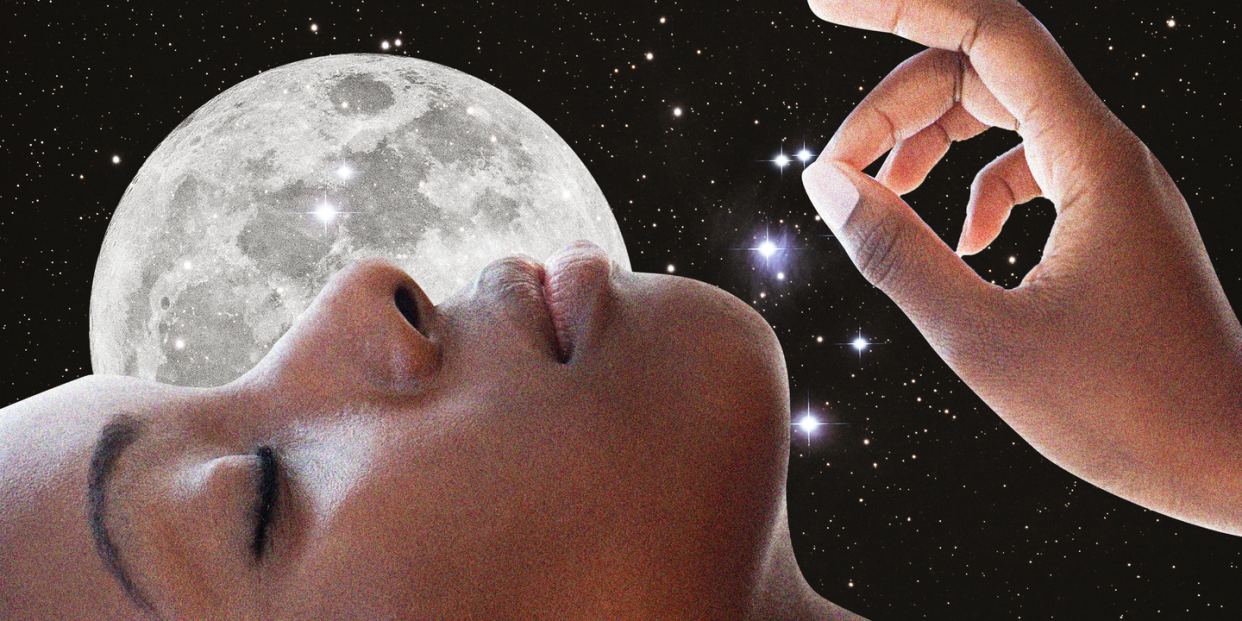The “Reality Shifting” Trend That’s Taking Over TikTok

If you’ve recently fallen down the TikTok rabbit hole, you may have stumbled on the reality shifting trend. The #RealityShifting hashtag now has more than 1.1 billion views. There are even entire TikTok accounts dedicated to the topic, with tons of tips and answers to FAQs. In other words, the trend is popping.
In case you’re not familiar, “shifting,” as the kids call it, involves doing different rituals to move your consciousness into an alternative desired reality—or DR for short—where you can go literally anywhere, real or imagined (Hogwarts, anyone?).
While reality shifting sounds like a cool concept and definitely a welcome relief to the rough almost-two-years we’ve all had thanks to the pandemic, I couldn’t help but wonder: Does shifting actually really work? I chatted with Nicole Hernandez, a hypnotist who goes by the Traveling Hypnotist, to learn more.
But first, what is reality shifting?
To understand the concept of shifting, Hernandez points to the movie The Matrix, where, she says, “we are living one existence on the surface, but there are multiple realities or dimensions all happening simultaneously.”
There are different rituals and methods TikTokers use to shift realities, and it can be done awake or while sleeping. For instance, the popular “raven method” involves meditating for 10 minutes while lying down in a starfish position, counting up to 100 while focusing on your DR and saying “I am shifting” as you fall asleep…and then wake up in that desired reality.
There’s also the “pillow method,” which involves writing (also called “scripting”) your desired reality on paper to feed your subconscious mind with details about what you intend to experience before going to sleep. Then you essentially fall asleep and wake up in that alternate reality.
All in all, Hernandez deduces that shifting essentially taps into two techniques: lucid dreaming, associated with REM sleep, the fourth stage of the sleep cycle before waking up, and self-hypnosis, which shifters have rebranded into different “methods.”
In particular, the process mimics self-hypnosis that begins with an induction. “Hypnotic inductions are simply a series of rituals, such as counting down from 10 to 1 and imagining walking downstairs,” Hernandez explains. “These rituals act as suggestions that help [people] dissociate from the external world and associate with their imagination or inner world. Hypnotic inductions often help the [person] relax, leading them toward a hypnagogic state, the natural transitional state between wakefulness and sleeping. Within this state, you are fully conscious and therefore have control over the visualizations that a hypnotist would suggest.”
Once they’ve shifted, TikTokers report that they can feel emotions in the desired reality. “They fully associate with the ‘movie in their mind,’ or visualization, and they can fully see, feel, and sense the environment,” Hernandez explains. It’s similar to what it feels like to wear virtual reality goggles.
So, does reality shifting really work?
While it’s impossible to know for sure if TikTokers are mentally shifting into a different reality, Hernandez credits the trend to our imagination, which is powerful enough to make something fully imagined feel very real. “We use [our imaginations] all the time in our daily lives in helpful or unhelpful ways,” she says. “Even worrying about the worst-case scenario is simply the process of using your imagination, and notice how just thinking about a negative outcome can cause your body to respond—releasing cortisol, activating a headache, or a racing heart.”
Still, regardless of whether or not shifting works, Hernandez concludes that the practice is generally a safe way to use your imagination. “You won’t get stuck in an alternate universe, just as you can’t get stuck in a daydream,” she says. Plus, it gets people away from their phones…well, at least until they make their next TikTok.
You Might Also Like

